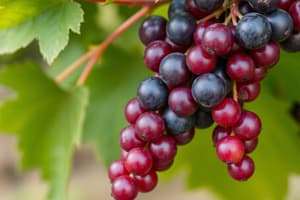Podcast
Questions and Answers
What is one of the mechanisms by which quercetin aids in the prevention of peptic ulcers?
What is one of the mechanisms by which quercetin aids in the prevention of peptic ulcers?
- Increasing H.pylori growth
- Promoting mucus secretion (correct)
- Inhibiting mucus production
- Stimulating gastric acid secretion
How does oxidative LDL (oxLDL) contribute to atherosclerosis?
How does oxidative LDL (oxLDL) contribute to atherosclerosis?
- It directly increases HDL levels in the bloodstream
- It enhances the immune response and inflammation (correct)
- It decreases blood flow to the arteries
- It promotes cholesterol absorption in the intestines
Which statement best describes the effect of flavonoids on LDL oxidation?
Which statement best describes the effect of flavonoids on LDL oxidation?
- Flavonoids only affect HDL metabolism
- Flavonoids enhance the oxidation of LDL particles
- Flavonoids have no effect on LDL oxidation
- Flavonoids suppress LDL oxidation and inflammation (correct)
What role does the D-alanine- D-alanine ligase (Ddl) enzyme play concerning H.pylori?
What role does the D-alanine- D-alanine ligase (Ddl) enzyme play concerning H.pylori?
What is a primary risk factor for the development of atherosclerosis?
What is a primary risk factor for the development of atherosclerosis?
What effect do flavonoids like quercetin have on the inflammatory response?
What effect do flavonoids like quercetin have on the inflammatory response?
Which of the following is a result of oxidized LDL accumulation in the arteries?
Which of the following is a result of oxidized LDL accumulation in the arteries?
Which of the following factors does NOT increase levels of oxidized LDL?
Which of the following factors does NOT increase levels of oxidized LDL?
What is one potential consequence of oxidized LDL accumulation in the arteries?
What is one potential consequence of oxidized LDL accumulation in the arteries?
Which flavonoid is specifically mentioned as having hepatoprotective activity?
Which flavonoid is specifically mentioned as having hepatoprotective activity?
Flashcards
Oxidized LDL
Oxidized LDL
LDL cholesterol that has reacted with free radicals, increasing its reactivity and causing tissue damage.
Heart Disease Risk
Heart Disease Risk
Consuming red wine in moderation helps protect against heart disease and cardiovascular disease.
Vascular Plaque Formation
Vascular Plaque Formation
Oxidized LDL accumulates in artery walls, attracting inflammatory cells and lipids, forming a plaque that thickens over time.
Inflammation & COX
Inflammation & COX
Signup and view all the flashcards
Flavonoids-Liver Protection
Flavonoids-Liver Protection
Signup and view all the flashcards
Helicobacter pylori (H. pylori)
Helicobacter pylori (H. pylori)
Signup and view all the flashcards
Quercetin's role in peptic ulcers
Quercetin's role in peptic ulcers
Signup and view all the flashcards
Atherosclerosis
Atherosclerosis
Signup and view all the flashcards
LDL oxidation
LDL oxidation
Signup and view all the flashcards
Flavonoids' effect on atherosclerosis
Flavonoids' effect on atherosclerosis
Signup and view all the flashcards
Study Notes
Biochemistry of Natural Products, Lecture 3: Flavonoids
- Flavonoids are polyphenolic secondary plant metabolites.
- They comprise 15 carbons (2 aromatic rings connected with a 3-carbon bridge) and numerous hydroxyl groups (OH).
- Flavonoids exhibit antioxidant properties by acting as free radical scavengers, singlet oxygen quenchers, hydrogen donors, and metal chelators.
- Flavonoid sources include fruits and vegetables, tea, red wine, citrus fruits, cocoa, and berries. Specific flavonoid types within these sources include: flavanols, flavonols, flavanones, isoflavones, and anthocyanins (depending on the food type).
- Flavonoids have several important biological properties.
- Anti-ulcer effects: promote mucus secretion and inhibit H. pylori bacteria.
- Anti-atherosclerotic effects: suppress LDL oxidation and inflammatory progression in arteries. Elevated LDL is a primary risk factor for atherosclerosis and coronary artery disease. Oxidized LDL reacts with free radicals, becoming more reactive and causing tissue damage; it also attracts immune cells (e.g. macrophages) and platelets to the damaged area exacerbating the process.
- Anti-inflammatory effects: inhibit the cyclooxygenase (COX) pathway and inflammatory mediators like arachidonic acid.
- Hepatoprotective activity: many flavonoids (e.g., silymarin, apigenin, quercetin, naringenin) protect the liver.
- Memory improvements: through various mechanisms like anti-neuroinflammatory actions, reducing metal ion neurotoxicity, promoting autophagy, reducing oxidative stress, mitigating mitochondrial dysfunction, and reducing amyloid-β and tau levels.
Physicochemical Properties, Extraction, Characterization, and Quantification
- Flavonoid glycosides are water-soluble and soluble in alcohols.
- Glycosides are extracted primarily using acetone or alcohols (ethanol, methanol) mixed with water, often at high temperatures.
- Aglycones are soluble in apolar organic solvents (like dichloromethane).
Extraction and Characterization of Flavonoids
- Extraction methods include maceration, Soxhlet, ultrasound-assisted extraction (UAE), supercritical fluid extraction (SFE), and accelerated solvent extraction (ASE).
- Chromatographic techniques (HPLC, TLC) are used for analysis.
Detection and Quantification of Flavonoids
- Flavonoids can be identified and quantified using various chemical tests.
- Shinoda, Vanillin-HCl, Zinc, and Ammonia tests produce specific color changes in the presence of flavonoids.
Studying That Suits You
Use AI to generate personalized quizzes and flashcards to suit your learning preferences.




